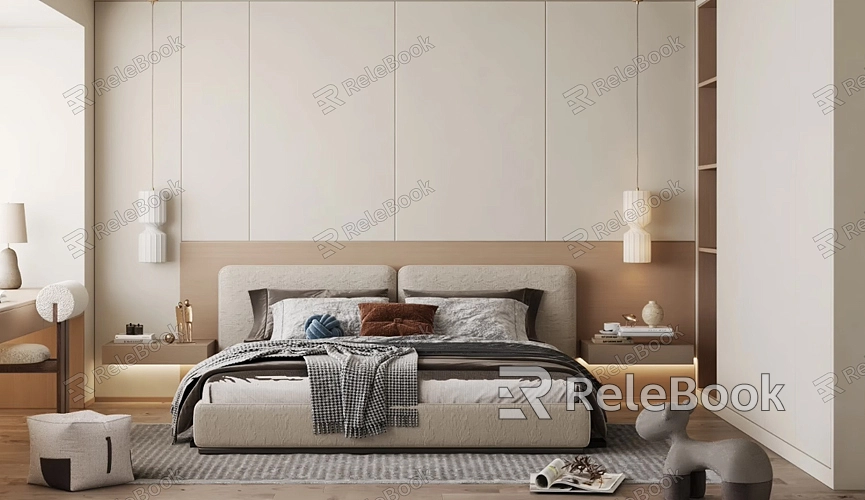How to Reduce File Size of 3D Model?

Simplifying Geometry
One of the primary contributors to large file sizes in 3D models is complex geometry. Models with a high polygon count can be visually stunning, but they often come with significant file sizes. Simplifying the geometry by reducing the number of polygons is one of the most effective ways to decrease file size.
1. Analyze the Model
Begin by identifying areas of the model where high detail is unnecessary. For example, flat surfaces or distant objects in a scene may not need as many polygons as focal points or curved surfaces.
2. Use Decimation Tools
Most 3D software, like Blender, Maya, or 3ds Max, offers tools for decimating or reducing the polygon count of a model. These tools allow you to maintain the overall shape while decreasing the number of polygons, thereby reducing the file size. In Blender, the “Decimate” modifier can be particularly useful for this task.
3. Manual Optimization
In some cases, manual optimization may be necessary, especially if automated tools result in unwanted artifacts or loss of important details. Manually merging vertices, removing unnecessary edge loops, or simplifying complex mesh areas can help reduce the file size without compromising the model’s quality.
Optimizing Textures
Textures can also contribute significantly to the size of a 3D model file. High-resolution textures are often essential for close-up details, but they may not be necessary for every part of the model. Optimizing textures can lead to substantial file size reductions.
1. Reduce Texture Resolution
Evaluate the resolution of your textures and consider downsizing them where possible. For instance, a 4096x4096 texture might be more than what’s needed, and reducing it to 2048x2048 or even 1024x1024 can dramatically decrease file size while retaining sufficient detail for many applications.
2. Compress Textures
Using compressed texture formats like JPEG or PNG can also reduce file size. Additionally, some 3D software and game engines support texture compression algorithms, which reduce the texture size without noticeable quality loss.
3. Use Tiling and Reusing Textures
Instead of creating unique textures for every part of your model, consider using tiling textures or reusing the same texture across multiple surfaces. This approach minimizes the number of texture files needed and, in turn, reduces the overall file size.

Removing Unused Data
3D model files often contain a lot of unnecessary data that can be safely removed without affecting the model’s performance. Cleaning up this unused data is a simple yet effective way to reduce file size.
1. Delete Unused Meshes and Materials
During the modeling process, it’s common to create multiple versions of meshes or materials that are later abandoned. Make sure to delete these unused items from your scene. In software like Blender, you can do this by going to the “Outliner” and removing any objects or materials not in use.
2. Clear History and Apply Transformations
Clearing the history and applying transformations can reduce file size. In Maya, for instance, deleting construction history removes unnecessary data that accumulates as you work. Similarly, in Blender, applying transformations (location, rotation, and scale) consolidates the model’s data, reducing file size.
3. Optimize UV Mapping
Efficient UV mapping can also help reduce file size. By minimizing the amount of wasted space in UV maps and ensuring that textures fit well within their UV shells, you can optimize the use of texture space, which contributes to a smaller file size.
Using Level of Detail (LOD)
Level of Detail (LOD) techniques are commonly used in games and real-time applications to reduce the number of polygons rendered based on the model’s distance from the camera. Implementing LODs can help reduce the file size of 3D models, particularly when exporting for use in these environments.
1. Create Multiple LOD Versions
Create several versions of your model with different polygon counts. For example, a high-detail version for close-up views, a medium-detail version for mid-range views, and a low-detail version for distant views.
2. Implement LOD in Your Application
Many 3D applications and game engines, like Unity or Unreal Engine, support LOD systems that automatically switch between different versions of the model based on the camera’s distance. Implementing these systems can help reduce the load on your application, contributing to a smaller overall file size.
3. Export Only Necessary LODs
When exporting your model, only include the LODs that are necessary for your specific application. This practice avoids unnecessary data in the final file, reducing its size.
Exporting in Efficient Formats
The file format you choose when exporting your 3D model can significantly impact its size. Different formats offer varying levels of compression and support for features like textures, animations, and other data.
1. Choose the Right Format
Some of the most common formats include OBJ, FBX, and GLTF. For example, GLTF is a relatively new format designed for efficient transmission and loading, making it a good choice for web applications and real-time engines. FBX, while often larger, is widely supported and good for models with complex data like animations.
2. Use Binary Formats
Where possible, opt for binary versions of these formats (e.g., GLB instead of GLTF or binary FBX). Binary formats are generally more compact because they store data in a way that’s optimized for size rather than readability.
3. Apply Compression
Many 3D software packages and external tools offer options for compressing files during export. For instance, when exporting GLTF files, you can use Draco compression, which significantly reduces the file size without compromising quality.
FAQ
How can I reduce the polygon count without losing important details?
You can reduce the polygon count by using decimation tools or manually optimizing the mesh. Focus on reducing polygons in less critical areas while preserving details in focal points. Tools like Blender’s “Decimate” modifier can help maintain the overall shape while lowering the polygon count.
What’s the best texture resolution for 3D models?
The ideal texture resolution depends on your specific project requirements. For most applications, a 2048x2048 texture is sufficient. However, for close-up details or large models, you might need higher resolutions. Always balance resolution with file size.
Can I remove unused data from my model without affecting its performance?
Yes, removing unused data like extra meshes, materials, and history can reduce file size without negatively impacting performance. It often improves performance by eliminating unnecessary processing.
What’s the difference between OBJ, FBX, and GLTF formats?
OBJ is a simple, widely supported format ideal for static models. FBX supports complex data like animations and is commonly used in game development. GLTF is optimized for efficient loading and transmission, making it suitable for web applications and real-time engines.
How does Level of Detail (LOD) reduce file size?
LOD reduces file size by creating multiple versions of a model with varying levels of detail. Depending on the camera’s distance from the model, lower-detail versions are used, reducing the overall data load and improving performance.

